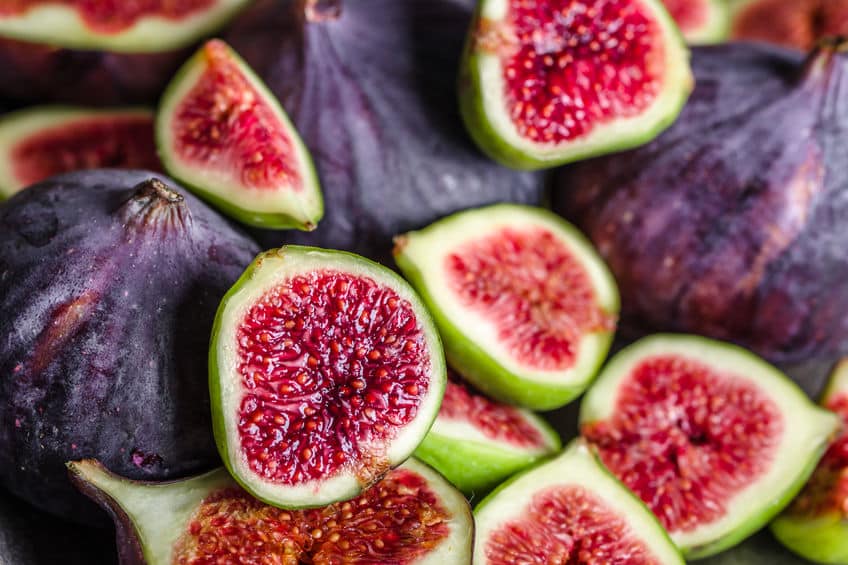By John Salak –
Tracking anything back more than 11,000 years is a pretty daunting task. But that’s how long the simple and delicious fig has been domesticated, according to archaeobotanists from Harvard University. In fact, these same scientists went on to report that fig trees in the Near East are probably the world’s first domesticated crop, beating out staples such as wheat, barley and legumes by more than 1,000 years. This kind of pedigree lends a new level of respect to all things figs including the Fig Newton.
Age and ancestry alone aren’t why figs should be revered. Beyond taste and texture, these fruits are a nutritious powerpack, loaded with vitamins, minerals, antioxidants, fiber and chlorogenic acid that can build immune systems, help fight disease and cancer, support intestinal and digestive health and give a health boost to skin and hair.
There’s more. The pink flesh of fresh figs offer all this and they are relatively low in calories at about 75 per hundred grams. Dried figs, which are brown, admittedly are higher in natural sugar content and have about three times the calories.
In terms of nutritional punch, fresh figs probably win out over their dried counterparts in other areas as well. They contains cancer fighting polyphenolic flavonoid antioxidants such as carotenes, lutein, tannins and chlorogenic acid, among others. They also offer antioxidant vitamins such as Vitamin A, E, and K.
Beyond just helping to battle to battle cancer, some research studies even suggest that chlorogenic acid in figs can help control Type 2 diabetes by lowering blood sugar levels and controlling blood glucose levels.
Both fresh and dried figs also hold decent levels of a B-complex group of vitamins that include niacin, pyridoxine, folates, and pantothenic acid, which help with the metabolism of carbohydrates, proteins, and fats.
Not to be totally dismissed by their fresh counterparts, dried figs also offer up an excellent menu of minerals like calcium, copper, potassium, manganese, iron, selenium and zinc.
The potential benefits of these vitamins, minerals and antioxidants are far reaching. Copper and iron, for example, supports the production of red blood cells. Potassium controls heart rate and blood pressure.
Healthline.com went further by offering up a boiled down version of the fig’s win-win qualities. These include fighting constipation and promoting digestive health through their fiber and prebiotic elements. Figs also can help build vascular and heart health and improve healthy cholesterol levels. Beyond this, the antioxidants in figs are known to help battle cancer, while fig leaves and the natural latex from fig plants might have “anti-tumor activity” needed to thwart colon, breast, cervical and liver cancers.
It tough to gripe about this number of potential health gains. But for those looking for figs to offer skin deep benefits as well, they are in luck. The antioxidants, vitamins and iron in figs are reputed to help generate smooth, silky hair, while fig flesh might be a pretty decent hair condition.
Femina, a health and beauty website, went on to report that figs have always been seen as a skin aid in Mediterranean cultures. Various skin care products, for example, contain Ficus Carica, the scientific name for the common figures. It is believed that mineral and nutritional components of figs when blended into creams from help fight skin cancer, treat warts and acne, hydrate skin and keep wrinkles at bay.
Just to keep things in perspective, Healthline.com and other sources warn that figs can have some drawbacks for a limited number of people, especially if over consumed. There are rare cases of individuals being allergic to figs. Overuse as a remedy for constipation also can lead to diarrhea and knock a person’s digestive system off kilter. The Vitamin K in figs also can interfere with blood thinning treatments.
The impact of these potential problems are limited in scope for the vast majority of consumers. Does this mean everyone should take a nosedive into a vat of Fig Newtons? Probably not. But grabbing a handful of fresh or dried figs regularly couldn’t hurt.













